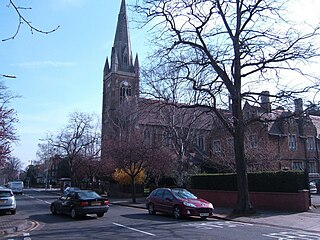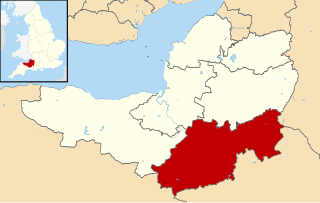
John Nash was one of the foremost British architects of the Georgian and Regency eras, during which he was responsible for the design, in the neoclassical and picturesque styles, of many important areas of London. His designs were financed by the Prince Regent and by the era's most successful property developer, James Burton. Nash also collaborated extensively with Burton's son, Decimus Burton.

Sir Charles BarryFRS RA was a British architect, best known for his role in the rebuilding of the Palace of Westminster in London during the mid-19th century, but also responsible for numerous other buildings and gardens. He is known for his major contribution to the use of Italianate architecture in Britain, especially the use of the Palazzo as basis for the design of country houses, city mansions and public buildings. He also developed the Italian Renaissance garden style for the many gardens he designed around country houses.

Belsize Park is an area of the London Borough of Camden, England. Electorally it gives its name to a ward of the borough, Belsize mainly overlapping; however some is part of Hampstead Town and Haverstock when that ward name is used.

Lancaster Gate is a mid-19th century development in the Bayswater district of central London, immediately to the north of Kensington Gardens. It consists of two long terraces of houses overlooking the park, with a wide gap between them opening onto a square containing a church. Further terraces back onto the pair overlooking the park and loop around the square. Until 1865 the terraces were known as Upper Hyde Park Gardens, with the name Lancaster Gate limited to the square surrounding the church. The development takes its name from Lancaster Gate, a nearby entrance to Kensington Gardens, itself named in honour of Queen Victoria as Duke of Lancaster.

Henry Spencer Moore was an English artist. He is best known for his semi-abstract monumental bronze sculptures which are located around the world as public works of art. As well as sculpture, Moore produced many drawings, including a series depicting Londoners sheltering from the Blitz during the Second World War, along with other graphic works on paper.

John Walter Atherton Hussey was an English priest of the Church of England who had a great fondness for the arts, commissioning a number of musical compositions and visual art for the church as well as amassing his own collection.

St Matthew's Church, Northampton is a Church of England parish church in Northampton, within the Diocese of Peterborough.

Temple Lushington Moore was an English architect who practised in London. He is famed for a series of fine Gothic Revival churches built between about 1890 and 1917 and also restored many churches and designed church fittings. He did some work on domestic properties, and also designed memorial crosses.

South Somerset is a local government district in the English county of Somerset. The South Somerset district occupies an area of 370 square miles (958 km2), stretching from its borders with Devon and Dorset to the edge of the Somerset Levels. The district has a population of about 158,000, and has Yeovil as its administrative centre.

Romney's House at 5 Holly Bush Hill, Hampstead, Camden, London was the home of the artist George Romney and then of the architect Clough Williams-Ellis. It is a Grade I listed building.

Gainsborough Gardens is a private road in Hampstead, in the London Borough of Camden. The road is arranged in an oval crescent around a central garden. It was laid out towards the end of the nineteenth century and influenced by the Bedford Park development in south west London. Many of its houses are grade II listed with Historic England. Notable former residents include the songwriter Gary Osborne, the historian Bernard M. Allen, and author John le Carré.

Gang Moor is a house on Whitestone Lane in Hampstead in the London Borough of Camden. It is listed Grade II on the National Heritage List for England.
Netley Cottage at 10 Lower Terrace is a house in Hampstead in the London Borough of Camden. It is listed Grade II on the National Heritage List for England.

Capo di Monte at 3 Judges's Walk on Windmill Hill is a house in Hampstead in the London Borough of Camden. It is listed Grade II on the National Heritage List for England. The house stands on the corner of Upper Terrace and Judge's Walk.
The Elms is a house on Spaniard's Road in Hampstead in the London Borough of Camden. It has been listed Grade II on the National Heritage List for England (NHLE) since April 1981.

Mount Vernon House is a house in Hampstead in the London Borough of Camden. It has been listed Grade II on the National Heritage List for England (NHLE) since May 1974. The garden wall is separately listed at Grade II. The house was built around 1726 and was altered in the early 19th century. It is rendered in stucco with a mansard roof. The house occupies the site of a windmill. It was constructed between 1725 and 1728 by a local Hampstead timbersmith, William Knight.

Abernethy House at 7 Mount Vernon is a house in Hampstead in the London Borough of Camden. It has been listed Grade II on the National Heritage List for England (NHLE) since May 1974. It was originally built as a girls school around 1819. It is a 2-storey house with attics with a double front with 3 windows. A wooden door case surrounds the central entrance.

Gardnor House is a house in Hampstead in the London Borough of Camden. It has been listed Grade II* on the National Heritage List for England (NHLE) since August 1950.

Church Row is a residential street in Hampstead in the London Borough of Camden. Many of the properties are listed on the National Heritage List for England. The street runs from Frognal in the west to Heath Street in the east. St John-at-Hampstead and its additional burial ground is at the west end of the street.

Moreton House is a detached house on Holly Walk in Hampstead in the London Borough of Camden. It has been listed Grade II on the National Heritage List for England (NHLE) since December 1969.


















